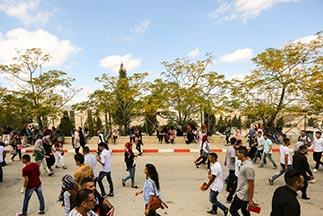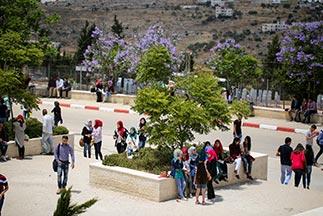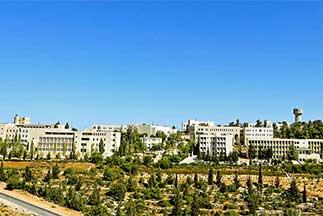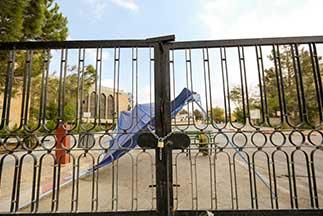Birzeit University Closure
Higher education profoundly affects the economy, society, and culture of Palestine. It is vital to the country's continued growth and ability to compete in an increasingly international market.
Palestine's higher education sector has emerged in recent years and distinguished itself in the region. However, the most recent period has been turbulent, marked by a lack of suitable planning, a unified university strategy, and an increase in the number of universities relative to the demographic distribution of Palestinians.
2015 statistics show that there are 52 accredited academic institutions: 14 traditional universities, 1 open university, 12 colleges, and 18 community colleges. Enrollment has risen markedly, increasing to 221,395 students in 2015. This growth demands increases in faculty and staff salary expenditures, in addition to constant logistics and academic improvements.
Nevertheless, insufficient funding has been an ongoing major concern for Palestinian universities, due to the government's dwindling contribution to higher education and irregularity in tuition payments.
At Birzeit University, student fees cover only 60% of the university's budget, and the remaining 40% are covered by the university from other resources. The university seeks to promote higher education, even among those who may have difficulty affording it. In the academic year 2015-2016, the university offered more than three million JDs in assistance, helping more than 4,000 students.
The university today faces a deficit of JD 2.8 million, which is expected to increase due to the recently signed agreement with other Palestinian universities and the union to adjust salaries. In addition, staff salaries are tied to a minimum exchange rate of 5.6 NIS per 1 JD and they are also reimbursed for the inflation rate, which dramatically increases the university’s expenses.
Birzeit University has never dismissed a student for failing to pay his or her fees and over the years, its officials have tried to negotiate settlements to make sure students in arrears do not miss semesters. The university is one body comprised of faculty, staff and students. The complexity of the financial dilemma is challenging, but also energizing as the university’s components work together to get better at what we do – for our students, for the larger society, and for the generations to come.






